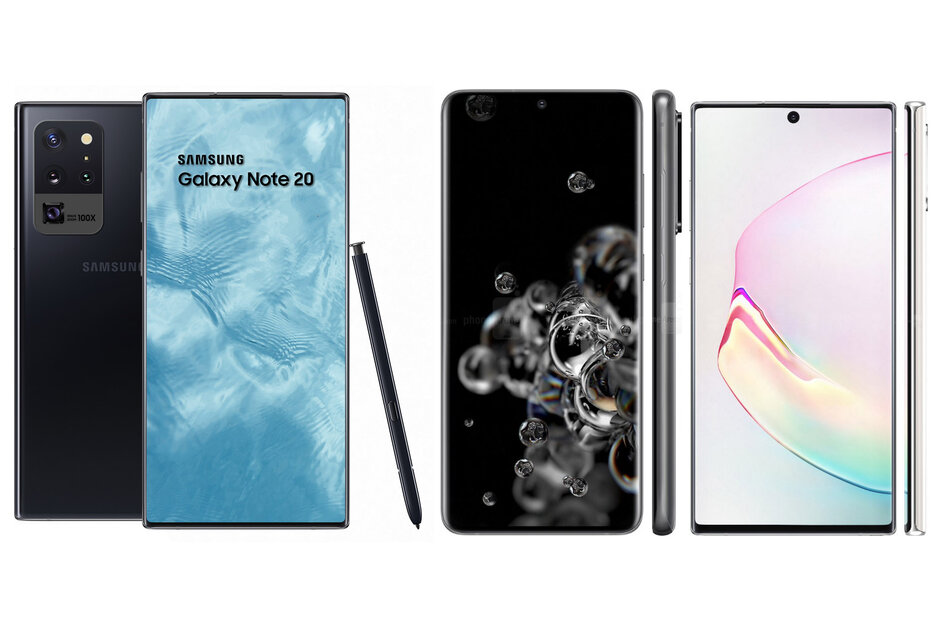Samsung will take the best of both display worlds, and develop a brand new OLED screen technology for the Note 20 series called HOP that will also trickle down to the iPhone 13 next year, claims Korean media.
HOP is, apparently, an abbreviation of Hybrid Oxide and Polycrystalline silicon, indicating that it will combine the up to 20% decrease in power consumption that low-temperature polycrystalline oxide (LTPO) displays like the ones on the Apple Watch employ, with the higher resolutions and lower costs of polycrystalline silicon (LTPS)-only panels like those on the Galaxy S20 Ultra.
Apple started using LTPO panels on its Watch series a while ago, and even holds some patents over the technology, so Samsung had to come up with a workaround for the Note 20 models, and that’s how HOP may have been born.
At the time, the LTPO (Low-Temperature Polycrystalline Oxide) tech on Apple’s Watch combined both LTPS TFTs and Oxide TFTs (IGZO, Indium Gallium Zinc Oxide). While the backplanes switching circuits are using LTPS, for instance, the driving TFTs use IGZO materials, resulting in power draw up to a fifth lower than LTPS-only. If that sounds suspiciously like the HOP technology of Samsung, that’s because it probably is something similar.
Samsung Galaxy Note 20 display refresh specs
Samsung’s Galaxy Watch Active 2 was its first LTPO device, and now the technology will apparently be maturing into flagship devices like the Note 20 models. While HOP will introduce a lower power consumption by a significant margin, a true 120Hz refresh rate at the full 1440p resolution as seen in phones like the OnePlus 8 Pro or the Oppo Find X2 Pro, may still be out of question for some reason.
Why? well, the thing is that those brilliant OnePlus 8 Pro or the Oppo Find X2 Pro displays require additional hardware components to work their dynamic refresh rate magic at full resolution, and Samsung may be hesitant to splurge more.
For the Galaxy S20 series, Samsung reportedly uses a software stack that references various refresh rate levels – from 48Hz to 120Hz – but an automatic refresh rate solution hasn’t been implemented, so the S20 Ultra stays either at 60Hz or at 120Hz at all times.
The OnePlus 8 Pro, however, has automatic refresh that defaults to, say, 120Hz when you are browsing, and drops to 60Hz when you are watching a frame-upscaled video. Thus, it is gentler on its battery in 120Hz mode than the S20 Ultra thanks to the auto refresh rate pick that the software will do, whereas the S20 runs the phone’s display on 120Hz at all times.
Moreover, and unlike the Galaxy S20 Ultra, the OnePlus 8 Pro display can be driven with a 120Hz refresh rate at the full 1440p screen resolution. Its 6.78″ panel, however, comes with the latest dedicated Iris 5 visual processor from Pixelworks that sits between the display controller and the system graphics chip, managing the dynamic refresh and MEMC abilities while watching video, while Samsung’s software-only solution is apparently light on fine tuning and big on power consumption.
We clocked abominable differences between the 120Hz display mode of the S20 series compared to the standard 60Hz in our battery test, and Samsung may have decided to address just that by employing the HOP technology in the Note 20, rather than spend on extra hardware components like the aforementioned Iris 5 chip that would allow 120Hz at 1440p resolution.
On the other hand, the Note 20+ model that is most likely to employ the HOP panel, is rumored to arrive with the 4500mAh battery capacity of the S20+, rather than the 5000mAh unit of the Ultra, so you might not see any amazing battery life gains in comparison to the S20 series. Well, at least there won’t be battery life shortening, so there’s that.
Samsung has reportedly already dedicated 75,000 display substrate sheets monthly to produce LTPO display panels, and, apart from Apple as a customer, its own Note 20 models may be anointed with the new power-sipping OLED screen technology.
Source: Phonearena


Comments